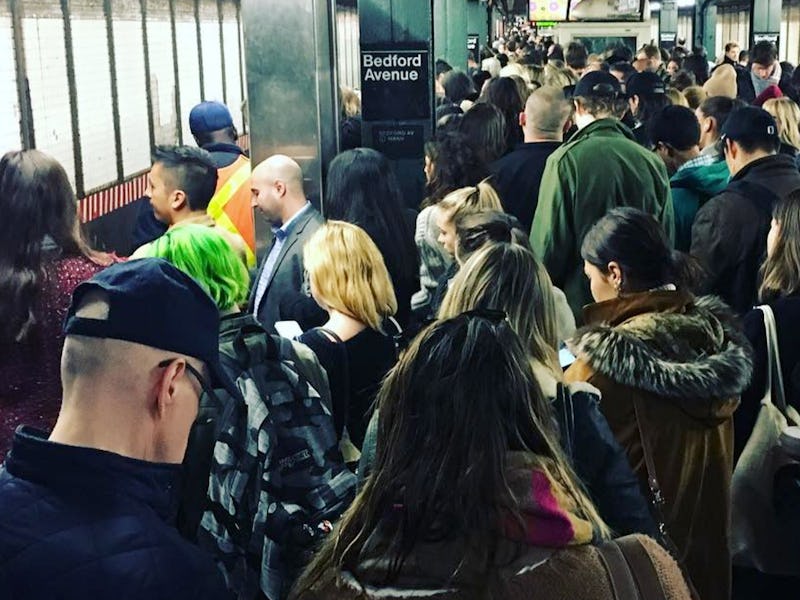New York Governor Andrew Cuomo knows he needs to fix the New York City subway, and fast, but he’s looking for the public to do it for him.
To this end, he’s announced a new effort, the “Genius Awards,” which will give out $1 million prizes to three innovators who have the tools New York City needs to fix its struggling subway system.
It’ll be awhile before the applications are due and even longer before the winners are selected. But there are a lot of things that the Metropolitan Transit Authority should probably do yesterday right now.
6. Increase Capacity
One of the subway’s biggest challenges is actually getting everyone on the train in the first place. In the short term, the MTA could take a page from Japan’s subway system and employ professional gloved shovers, who push and pull for you, making sure each car reaches its capacity at rush hour. (Can you imagine?) Seriously though, the system needs structural overhaul. There’s a maximum number of trains that can be on each line at any given time, and it’s a small number. If the MTA works to increase the number of trains operating at once, one day we might not need taxpayer-funded professional nudgers.
5. Open the Gangway!
The MTA recently started experimenting with open gangway car design — and that work should absolutely continue. Like professional pushers and more cars, this design allows more riders onto each car. When London adopted this redesign, they fit a laudable 10 percent more people on each train.
4. Make it ADA Compliant
The majority of New York City’s stations aren’t accessible to the physically disabled. Currently, disabled riders have to go to the one station in the area that is compliant with the Americans with Disabilities Act, and circle back to their actual destination via some other mode of transportation. The innovation here is simple — more and functional elevators. But it won’t work unless the city prioritizes it.
3. Screen the Tracks
People fall on the tracks a lot. It injures — and often kills — riders. And it creates system-wide delays. The MTA is reportedly testing new technology to detect a fallen rider on the track. But a simpler innovation might be to go the way of Hong Kong, which places a sliding glass door between riders and the open track of the platform so people aren’t worried about pushing or shoving or, you know, dying.
2. Make the Superficial Changes Fast
A purely aesthetic makeover could mean a lot. Really. Metro riders around the world take a lot of pride in their systems, which are well-maintained, full of art, or exceptionally comfortable. While New York certainly has some standout stops, they’re the exception to the dark, dank rule.
1. Maybe Just Start From Scratch with the Signal System
Perhaps the single most entrenched problem the subway faces is its old and ineffectual signal system. The MTA is reportedly working on this ancient issue and ultimately hopes to be a little more like London, which is using computers to make the trains run on time. But don’t hold your breath.
